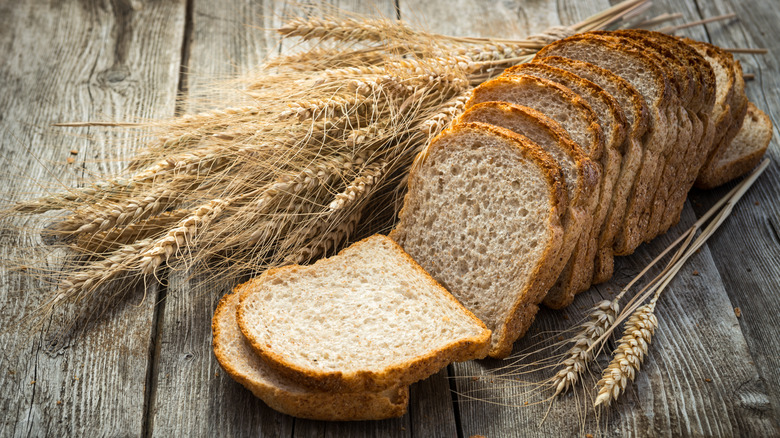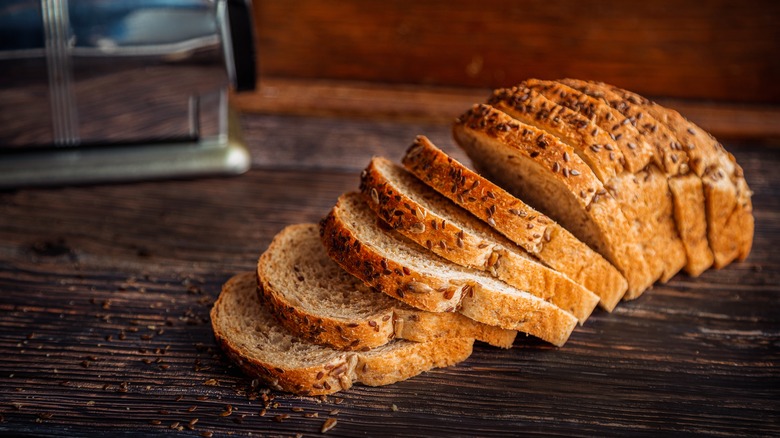You May Not Be Getting What You Think When You Buy Wheat Bread
We've all heard that wheat bread is more nutritious than white. Though white bread was once a status symbol and tastes like a fluffy cloud, there are plenty of health benefits that come with choosing wheat bread instead. According to an article in Current Developments in Nutrition, wheat bread has more protein and up to three times as much fiber as a white loaf. In addition, whole wheat bread typically has more vitamins, minerals, healthy fats, and antioxidants than white bread.
While the distinction between the two sounds simple enough, it can still be tough to find exactly what you're looking for at the grocery stores. Examples of common labels you may see include "sprouted whole grain," "100% whole wheat," "whole grain," "multigrain," and etc. They all sound similar, but don't be fooled — not all wheat breads are the same, and these phrases don't necessarily correlate with better nutrition. Let's explore which terms to look for in order to get your hands on the particular variety you want.
Wheat and whole wheat are two different things
White bread is actually a wheat bread. How is that possible? It's made by extracting the starchy part of wheat seeds. Whole wheat bread, on the other hand, is made with flour that uses every part of the grain, including the bran, germ, and endosperm, while white bread only incorporates the endosperm. The endosperm has some protein and vitamins in it, but the bran and the germ contain most of the good stuff, including fiber, vitamin E, B vitamins, healthy fats, and minerals.
So if you're looking for as many health benefits as you can get, you'll want to look for bread that was made with the entire wheat seed. However, food labels can sometimes play tricks on us. Simply buying wheat bread, or bread made with wheat flour, doesn't necessarily mean that the whole wheat seed was used, as we now know that white bread is technically made with wheat too.
Here are some words to look for instead. "Whole wheat flour" means that the entire wheat seed was used, and graham flour refers to whole wheat flour that has been coarsely grinded. Stone ground is just another type of whole wheat flour made by crushing grains between two stones. Buying bread with any of these terms on the label is likely to get you the nutrients you want — but when in doubt, look for "whole wheat flour" instead of just wheat.

